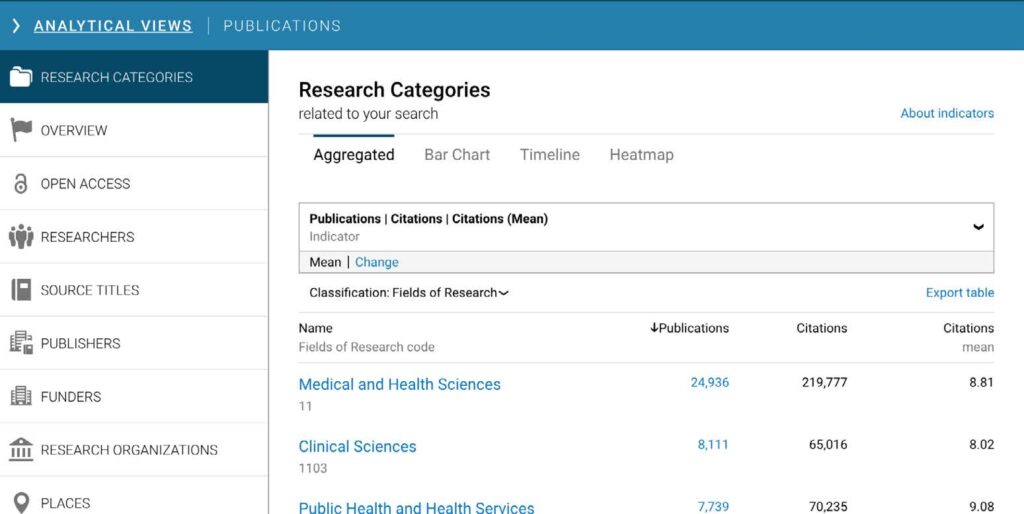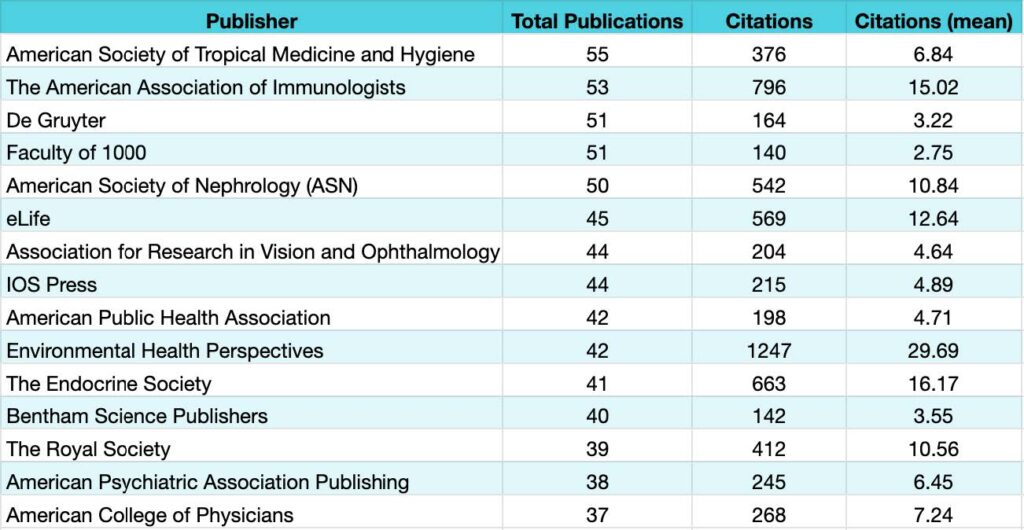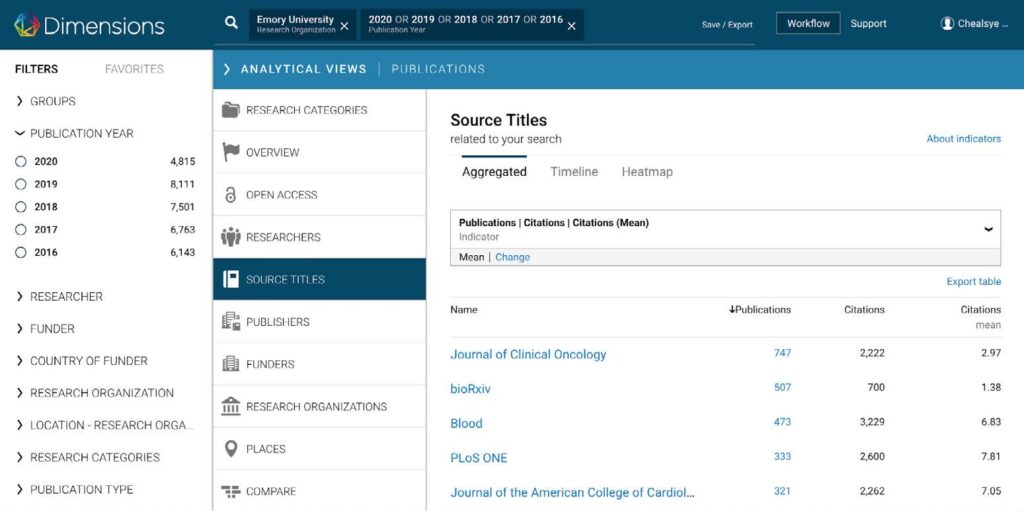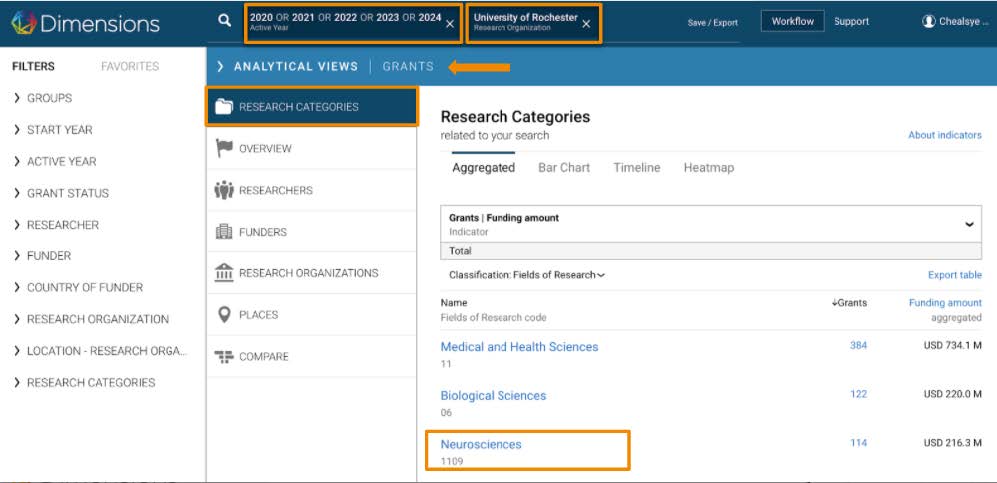The academic research and publishing landscape is rapidly changing. As universities and research institutions have to re-evaluate their collections under the pressure of budget cuts, we increasingly see transformative agreements and re-evaluations to journal subscriptions taking place. Academic librarians use Dimensions to ensure they meet one of their most critical goals: making the right decisions about which information their researchers need access to.
Through Dimensions you can gain a solid understanding of your institution‘s strength in specific research fields and the different indicators of quality for journals your researchers need to access.
Dimensions uses interconnected data across publications, clinical trials, patents, datasets, policy documents, and more, supporting librarians in their everyday tasks and helping to prepare them for crucial negotiations.
Watch a demo of how Dimensions makes strategic collection development decisions from our on-demand webinar.
Preparing for collection negotiations
Let‘s review some of the fundamental questions Dimensions can answer when analyzing which content your researchers need to access and why.
Which research fields are strongest at my institution, and where do I need to focus my budget?
Do your current subscriptions meet all your researchers‘ content needs? Would it be better to explore alternative access agreements and focus on what is being referenced, published and gaining online attention by researchers at your institution? Through Dimensions you can gain a solid understanding of your institution‘s strength in specific research fields, the fields your researchers have been awarded funding in, and the different indicators of quality for journals your researchers need to access.
Dimensions provides a variety of routes to analyzing the publication and funding data that can be helpful in making strategic collection development decisions, including:
- Open Access publishing trends at an individual, institutional, journal and publisher level
- Publishers or specific journals – analyze your institution‘s publication output and contextual metrics associated with them
- Funding awards and funders that are instrumental to your institution‘s research output.
Dimensions’ Analytical Views also allows you to perform detailed analysis of Research Categories (figure 1). You can filter on your institution, select the years you want to include, and begin to understand which research fields your institution is most influential in.

How can I better inform my negotiations with publishers?
Understanding where your researchers are publishing their work, what journals they are citing, and the impact of their publications, helps inform negotiations with publishers.
Librarians use Dimensions to answer these questions. You can easily filter content published by your researchers then match it together with contextual metrics like citation means and your readership data. Exporting the data and reviewing it in table format (figure 2) can often reveal unexpected insights. For example, in figure 2, we see a publisher with a higher than average citation mean (Environmental Health Perspectives). This is interesting because it indicates that work published with this publisher is generally highly cited.

Which are the most important journals for researchers at my institution to access and why?
Now that you have established high ranking fields of research and high ranking publishers in terms of quantity and quality, you will want to review individual publications.
Dimensions can show you the journals that your researchers publish in most frequently (figure 3). Together with readership data, this information tells you which journals you may need to prioritize. What is unique about Dimensions is its inclusion of preprint server data. Unlike other databases – like Web of Science or Scopus – Dimensions includes this data because it is essential for librarians when understanding how researchers prefer to publish their work, unearth potential alternative access through repositories, and to gain insight into research publication trends more broadly.

But what about additional metrics that could inform your collection development? Multiple journal and article-based metrics are available in Dimensions to analyze various viewpoints. FCR (Field Citation Ratio), for example, is a normalization metric indicating the relative citation performance of an article compared to other articles within the same research field. Altmetric calculates scholarly impact based on online attention to research outputs, like social media mentions, news stories, blog entries and more, helping you to understand which content raises your institution‘s attention profile globally.
Whichever metric is important to you and your institution, Dimensions can provide analytical viewpoints to inform and contextualize the content, ensuring you make data-driven decisions to maximize the impact of your budget.
What kind of journal content access delivers the most value for my budget?
Open Access content may deliver the most value for your budget while meeting the needs of your researchers and enabling you to cancel a big deal. A librarian can utilize Dimensions to understand how much of a journal is Open Access, including breaking down data by publication year. If a satisfactory amount of the journal is available openly it could be a subscription to cancel, or the data be used as another piece of data in collection negotiations.
Dimensions can show you relevant Open Access trends, such as:
• What percentage of a journal is Open Access
• What percentage of articles per publisher are Open Access
• What percentage of Open Access articles are published by your researchers
Understanding this data is helpful for librarians considering purchasing access to a specific journal, preparing for negotiations for a transformative agreement, or understanding the impact of Open Access policies implemented by their institution.
How can grant data provide critical insights to support decision making?
Before deciding on a collection decision, it is crucial to understand what research will be done at your university in the near future. Understanding active grants over the next five years, for example, helps you to evaluate the content your (funded) researchers will need access to, and where they are likely to publish research funded by that grant. An excellent place to start is retrospectively, and ask yourself, where are articles currently funded by my institution‘s main funders published? It’s equally important to look at the future, and investigate which new grants your researchers have received, which will give you an indication of where they will focus their publication efforts in the future (Fig 4).

Since funders are interested in seeing the broader impact of their funding, altmetrics are an additional indicator to discuss during negotiations with the publisher. Altmetrics show how broad attention to the article is, and there may be a significant correlation between publishers who work closely with authors to help get their research spread to wider audiences that result in higher altmetric scores within their journals. Having all this information contained within a single database like Dimensions means you can delve into a fuller picture with just a few clicks.
Talk to us and learn how we can help your institution
Are you interested in finding out how Dimensions can benefit your institution? Please contact us and we’ll be in touch soon.
